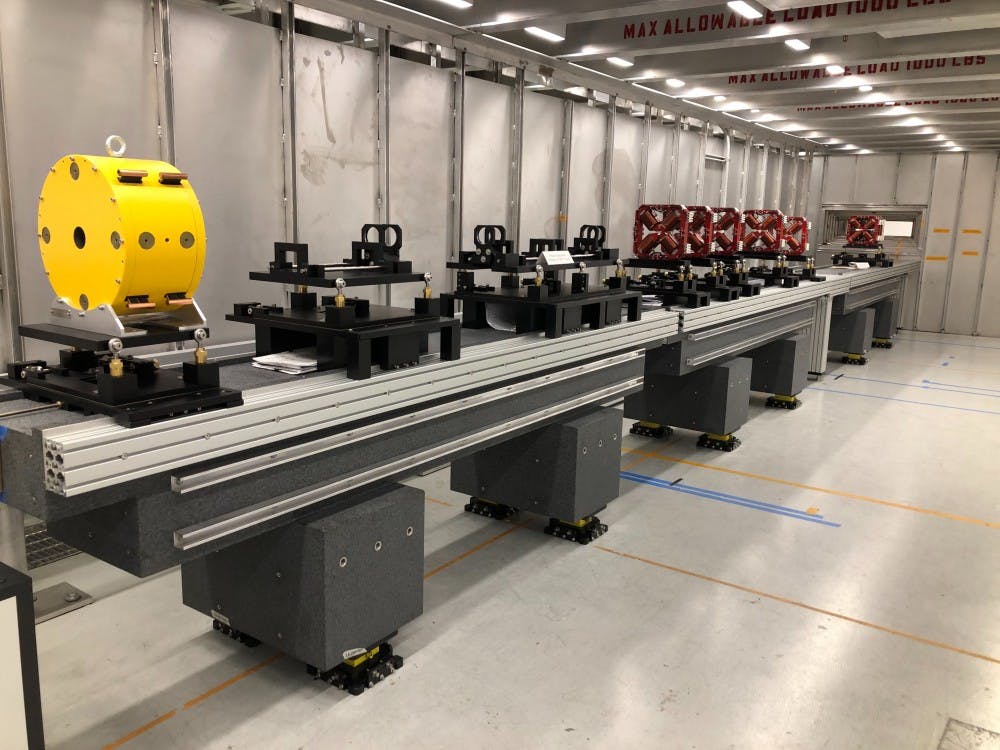Biodesign Institute researchers recently won a $4.7 million National Science Foundation grant to continue developing a compact version of a molecular X-ray machine.
William Graves, the project's leader and a professor in ASU's Physics Department, said the Compact X-ray Free Electron Laser (CXFEL) will produce images early next year, but the laser component needs to be designed.
Joshua LaBaer, director of the Biodesign Institute, said the NSF grant will move that phase of the project forward.
"The grant that he got is really to do the planning and science that's needed to convert the light source into a laser," said LaBaer.
LaBaer said the NSF's approval of Graves' grant application validates the importance of continuing the project.
"This grant is what's called a planning grant," LaBaer said. "It's funding to develop the plans for building the device that he wants to build."
Graves said the project's team is made up of scientists and engineers from a variety of universities, including Stanford and MIT.
“Together, we’re going to design the X-ray laser," Graves said. "Conceptually, we know what it looks like, but now we have to really get down and design exactly the experiments we’ll do and exactly how we’ll operate it.”
Read more: With $120 million Biodesign C, ASU cements focus on collaborative science
Graves said that the XFEL machine is around a mile long. In comparison, the CXFEL is 30 feet long and fits in a single research building.
Graves said XFELs are large because they use a mile-long set of magnets to create a field that makes electrons wiggle.
“These magnets look just like refrigerator magnets,” Graves said. “They have opposite fields, so each one is pointed the opposite way. One’s north, the next one’s south.”
Marc Messerschmidt, associate research professor with the School of Molecular Sciences, said wiggling electrons “dislocate” a molecule, making it lose energy in the form of light, which is how the X-rays are made.
“What we did was replace the magnets with a really powerful (infrared) laser,” Graves said. “What happens now is the electrons are traveling along and they go through the laser field, which is an electromagnetic wave. It has a magnetic field too, and the electrons wiggle in the magnetic field of the laser.”
Graves said the CXFEL will be more widely accessible than the XFEL, and Messerschmidt said the CXFEL project team is also very different from an XFEL facility.
“The real point to drive home is that we have a rather small facility, it’s roughly 1% of the size of the big facilities in terms of people working here,” Messerschmidt said.
Messerschmidt said that this project is unique in its technology and in the range of ASU participants.
“It involves all stages of people at the University, so we actually have undergraduate and graduate students really contributing to this machine,” Messerschmidt said.
Associate research scientist José Martin Garcia said images from the CXFEL will further his research on glioblastoma multiforme, a deadly form of brain cancer.
Martin Garcia said that the laser illuminates the structure of a protein, which allows scientists to pair one protein to another without accidentally binding it to others.
He said this technology could also aid pharmaceutical research because understanding proteins leads to what he called the “rational design of drugs.”
“You put an antibiotic in contact with a protein, but then it may end up that compound binds to different proteins. So at the same time you might be curing cancer, you also can be damaging healthy tissues because that compound binds to a different protein,” Martin Garcia said.
Graves said that this project is monumental and hopes that the CXFEL will lead to more opportunities in research.
“Making the (compact) X-ray laser is super exciting because right now they’re a mile long and they cost a billion dollars,” Graves said. "If we can get that down to fitting in the basement of the building and costing about $10 million, it should have a revolutionary impact on science."
Graves said that ASU gave this project a foundation to be successful.
“For me it’s been a huge amount of fun coming to ASU and doing this, and seeing this come into existence," Graves said. "I mean, there are very few universities who would take on a project like this."
Reach the reporter at gmlieber@asu.edu or follow @G_Mira_ on Twitter.
Like The State Press on Facebook and follow @statepress on Twitter.




